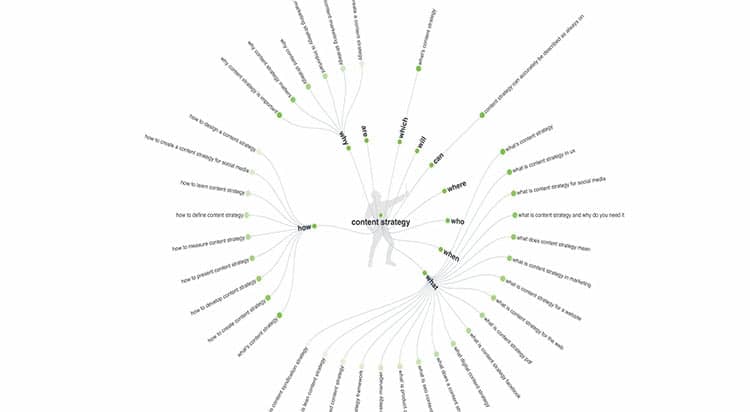
If you’ve been in the SEO or content game for any amount of time, chances are you’ve come across terms like hub, spoke content, pillar post, pillar pages, topic clusters, content clusters, etc. What are these terms alluding to? How exactly does this content framework help to benefit how your content shows up online?
Because many of these terms can be used interchangeably, the concept can sometimes be confusing. We hope that the below explanation will simplify this and show you precisely what topic clusters are and how they help improve your online content strategy.
Piller Pages (Hub Pages)
Pillar pages are typically long-form content pages or posts used to give a comprehensive explanation of a particular topic or subject matter. They function as an upper hierarchy where other sub-topic pages (clusters) relevant to the core theme can interlink. In this way, the content linking to the pillar post topic acts as a support to the pillar post.
Cluster Pages (Spoke Pages)
A cluster theme is a large number of topically relevant content pages that live on a site and link to a specific overarching page. The pillar pages are typically broad and cover topics in a more general fashion. In contrast, the cluster content deals with narrow issues (long-tail keywords) relative to the pillar post subject matter.
Topic Cluster
A topic cluster consists of a central pillar (Hub) page that links to several related articles within that cluster (Spoke).
An excellent way to think of a topic cluster is to think of a book. Pillar pages are like the book itself. The cluster pages are like the book’s individual chapters; they support the overarching theme, each covering a different angle or topic.
Because theme clusters contain different content pages that add more detail to the overarching theme, they provide your users with high-quality content related to your pillar post’s specific theme, all without the user having to leave your website. Once you have defined your clustered content theme, it is worth looking for gaps in your content to answer a query that a potential customer might have on a topic.

Why Are Topic Clusters Good For SEO?
Content clusters take SEO optimization to the next level, which is a more sophisticated strategy than the old practice of inserting as many keywords as possible into a piece of content and hoping Google will notice and rank that content on top of their search engine. A strategy based on topic clusters, on the contrary, uses internal linking and group topics modeling to provide website users with a better experience.
How Topic Clusters Impact Your Website?
The most efficient explanation is a direct comparison between a website organized around topic clusters and a regular website with no such organization
When there are no topic clusters, your SEO efforts are very similar to throwing mud at a wall and hoping some will stick. Maybe you do keyword research, pick some lucrative keywords, and then use them in targeted articles. Maybe you rinse and repeat multiple times, hoping to end up with a bunch of content pieces that rank on Google’s search engine results page. If you do this long enough, you’ll see that you’ve built a vast archive of random articles on a wide range of topics that are somehow related to your industry or area of activity. If you were to put these topics on a chart, you’d probably get a pile of topics scattered all over the place.
Even so, you may still have some real gems in there. Nevertheless, Google seems to fail to recognize your website as an authority in your niche or industry or reward you with the top rankings you deserve after producing such high-quality information for your readers
On the contrary, a website that adopts the topic cluster model looks much more organized and intentional.
Building Topic Clusters.
Before making any changes to your content, we first suggest undergoing an exhaustive analysis of your prospective customer or clients’ business goals. From there, you can conduct keyword research with these goals in mind. If the website you’re working on has a lot of content, this in-depth audit is necessary. You’ll need to assess each piece of content and try to group all of them by topics, considering your clients’ goals. These topics are nothing but your future clusters. All of the articles that relate to a specific topic will become that topic’s cluster content. In some cases, you may even want to remove thin content that is outdated or that does not have a place in this content structure.
A Good Topic Cluster Research Tool
If you are struggling to develop ideas for your topic clusters, try using “Answer the Public.” Answer the Public is an excellent tool for generating content ideas and taking your content marketing strategy to the next level. It can also help identify potential content for your pillar pages and cluster pages. Just type in a search term, hit ‘enter’ and get a visual representation of the most common search queries and related to autocomplete phrases.

After you’ve identified the main topics, you should designate a pillar page for each cluster to keep all of its content together.
There are times when you can’t identify existing content to serve as a pillar page, so in these cases, you’ll have to create it from scratch. However, most of the time, you may be able to re-purpose and adjust some of your website’s existing content to make it serve the “broader” scope you need them to. If you intend to choose some of the existing pages to use as pillar content, make sure you perform search volume analysis to identify the best performers to select as pillar pages.
Linking Your Clustered Content
Once you have outlined your clusters and your pillar pages, you need to put all these puzzle pieces together by interlinking them consistently and accurately. Each piece in a topic cluster should link to the pillar page, and the pillar page should link back to all of these pieces. This is how internal linking within clusters works.
As stated above, Google uses both internal and external links to assess the authority and the quality of a web page. This is the part of the process that brings home the bacon, so it’s essential to put forethought into it. If you’ve passed all the stages above, you now have an excellent array of clusters with internal links organized around the key topics. Like most things in marketing, you can’t? do it once and expect it to last forever. You should regularly add new content to your clusters, which will further your website’s relevance around that cluster theme. Also, make sure to add occasional updates to your pillar page to keep it fresh in Google’s index. As you publish new content pieces in your clusters, you have to edit your pillar pages to link back to these recent articles.
Identify The Content Gaps
If you feel like you’ve run out of fresh content ideas, you may be able to overcome this writer’s block by taking a closer look at your clusters. You’ll see that identifying content gaps becomes relatively easy when you deal with a well-organized website.
Use Gaps To Your Advantage
The more you write, the larger your topic clusters will become. At some point, you’ll discover new opportunities that will lead to the formation of new clusters by using these content gaps.
Topic clusters are all about grouping a series of related content into a single theme or column page. When done correctly, this methodology creates an environment whereby search engines more easily examine and understand the contextual relationship between related content on your website.
